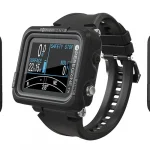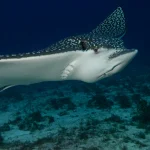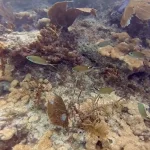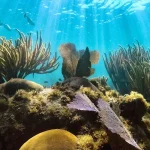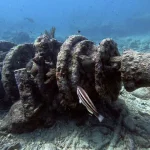Table of Contents
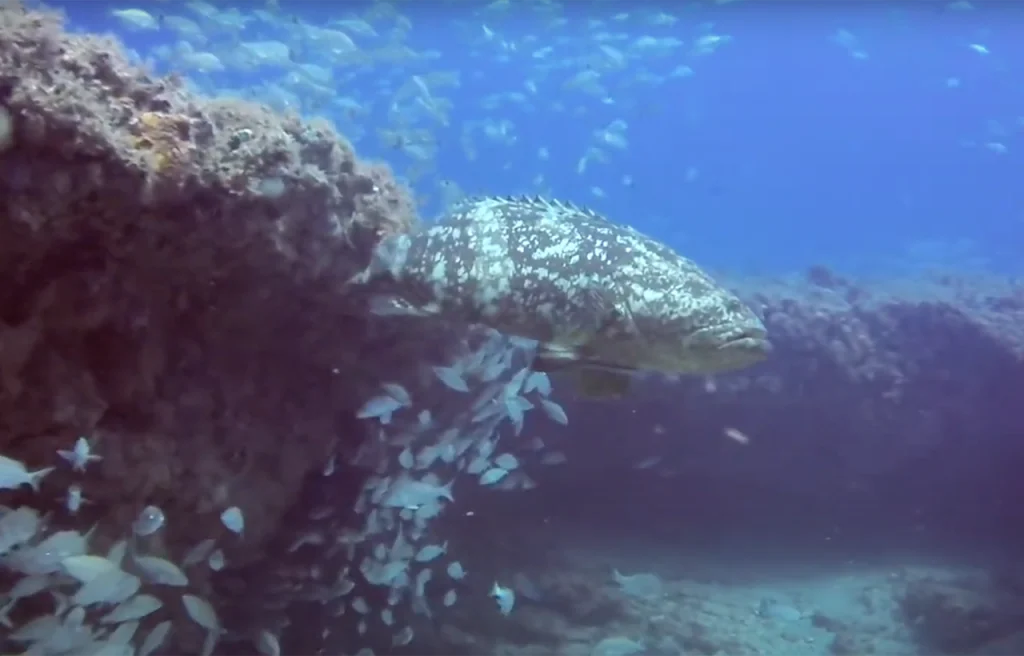
This dive site is part of the Jupiter Dive Center’s offerings and is particularly favored for its high ledges and diverse ecosystems.
Article at a Glance
- Location: Situated off the coast of Jupiter, Florida, Captain Mike’s Dive Site is renowned for its vibrant marine life and unique underwater topography.
- Depth Range: Dives typically range from 75 to 90 feet, making it suitable for advanced divers.
- Visibility: Expect excellent visibility, often between 25 to 60 feet, especially during the winter months (January to April).
- Marine Life: Divers can encounter a variety of species, including Goliath Groupers, Reef Sharks, Lemon Sharks, and Loggerhead Turtles.
- Diving Type: The site is ideal for drift diving, allowing divers to glide along currents while exploring rich underwater ecosystems.
- Best Times to Dive: Optimal diving conditions are from January to April for visibility and shark sightings, with Goliath Grouper spawning occurring in late summer (August to September).
- Experience Level: Recommended for advanced divers; beginners should gain experience at shallower sites before attempting dives here.
Captain Mike’s Dive Site Jupiter
- Location: Off the coast of Jupiter, Florida.
- Depth: The site typically ranges from 75 to 90 feet, making it suitable for advanced divers due to its depth and drift diving conditions.
- Visibility: Known for excellent visibility, often referred to as “Jupiter Blue,” which enhances the diving experience.
Diving Conditions
The dive site features a high ledge that averages between 15 and 20 feet from the sand, creating an aquarium-like environment filled with tropical fish. Divers typically start their dive on top of this ledge at around 75 feet deep, where they can observe a plethora of marine life before drifting north along the ledge. The currents can be strong, so divers should be proficient in drift diving techniques and aware of tide schedules to optimize visibility conditions.
Experience Level
Captain Mike’s Dive Site is recommended for advanced divers due to its depth and the necessity of managing currents effectively. Beginners may find the conditions challenging and are advised to gain experience before attempting dives at this location.
What Marine Life Can I Expect To See?
Common Marine Life
- Reef Sharks: These include both Nurse Sharks and Reef Sharks, often seen cruising along the ledges.
- Goliath Groupers: These large fish are frequently spotted, especially during their spawning season in late summer, where they can aggregate in significant numbers.
- Turtles: Loggerhead, Hawksbill, and Green turtles are common sights, often found foraging or resting on the reef.
- Moray Eels: Green and spotted morays are typically found in crevices and are known to swim freely around the dive site.
Fish Species
- Angelfish: Various species such as Blue, Queen, French, and Gray Angelfish add vibrant colors to the underwater scenery.
- Tropical Fish: Large schools of tropical fish, including Tomtates and grunts, create dynamic underwater displays.
- Other Fish: Divers may also see Barracuda, Yellowtail Snapper, Squirrelfish, Goatfish, and Atlantic Spadefish.
Seasonal Highlights
During the winter months (January and February), divers can particularly look forward to seeing:
- Lemon Sharks: These sharks aggregate in the area during this time, providing an exciting opportunity for encounters.
Unique Features of the Dive Site
The underwater topography at Captain Mike’s features high ledges and mini-environments or “aquariums,” which are teeming with life. As divers drift along these ledges, they often encounter curious reef sharks and Spotted Eagle Rays gliding through the water. The combination of excellent visibility and diverse habitats makes this site a premier destination for underwater exploration.
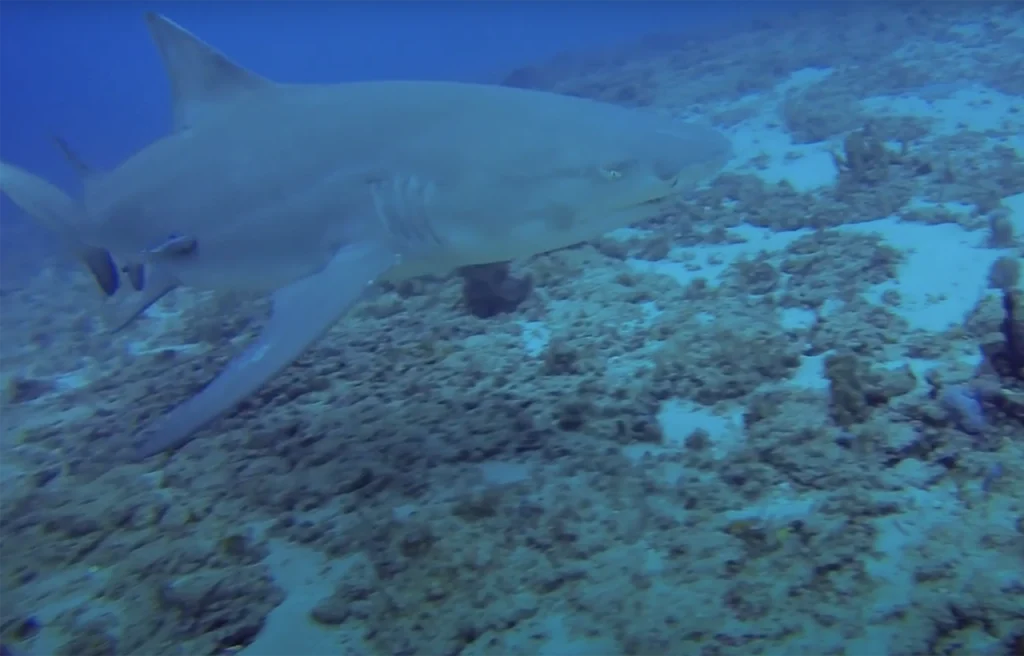
What Do Divers Say About This Site?
Positive Feedback
- Friendly and Professional Crew: Many divers praise the crew for being exceptionally friendly and helpful. Reviews highlight that the staff is knowledgeable and committed to ensuring a safe and enjoyable diving experience. One diver noted, “Honestly I don’t know if an entire staff could be any friendlier,” emphasizing the crew’s willingness to answer questions and provide support before and during dives.
- Great Diving Conditions: Divers frequently mention the excellent visibility and vibrant marine life, including encounters with Goliath Groupers, sharks, and turtles. One review described a drift dive as “super cool,” with divers feeling like “Superman” due to the strong currents, while still enjoying the underwater sights.
- Well-Organized Operations: The dive shop is noted for its professionalism, with divers appreciating the well-equipped boats and organized diving trips. A review stated, “Top-notch service all the way from start to finish,” indicating satisfaction with both the diving experience and customer service.
Key Information
| Category | Details |
|---|---|
| Location | Jupiter, Florida |
| Depth Range | 75 to 90 feet |
| Visibility | Typically 25 to 60 feet (best from January to April) |
| Experience Level | Advanced divers recommended; not suitable for beginners |
| Diving Type | Drift diving |
| Marine Life | Goliath Groupers, Reef Sharks, Lemon Sharks, Turtles |
| Best Time to Dive | January to April (for Lemon Sharks); August to September (for Goliath Groupers) |
| Notable Features | High ledges, underwater topography, vibrant ecosystems |
| Courses Offered | Advanced Open Water Diver, Digital Underwater Photography |
| Equipment Needed | Standard dive gear; nitrox recommended for deeper dives |
| Safety Considerations | Strong currents; requires familiarity with deep diving techniques |
Highlights of Diving This Site?
Unique Underwater Environments
- Aquarium-Like Ecosystems: The site is known for its mini-environments or “aquariums,” where divers can observe a wide variety of marine life in vibrant settings. These areas are teeming with tropical fish, including Angelfish and Grunts, creating a visually stunning experience.
- High Ledges: The dive site features high ledges that average between 15 to 20 feet from the sand, providing diverse exploration opportunities. Divers typically start their dive at around 75 feet deep, where they can encounter an abundance of fish before drifting along the ledges.
Marine Life Encounters
- Shark Sightings: Divers often encounter multiple species of sharks, including Reef Sharks and Lemon Sharks during winter months (January to February). The presence of these sharks adds an exhilarating element to the dive experience.
- Turtles: Loggerhead and Hawksbill turtles are commonly spotted, often resting or foraging near the ledges. This site is also known for sightings of Green sea turtles.
- Goliath Groupers: These large fish are frequently seen at the site, particularly during their spawning season in late summer. They are known to be curious yet shy around divers.
Seasonal Highlights
- Best Time to Dive: The optimal diving conditions are typically from January to April, when visibility is excellent and Lemon Sharks aggregate in the area. This period enhances the likelihood of exciting marine encounters.
Diving Conditions
- Drift Diving: The site is ideal for drift diving, allowing divers to glide along currents while exploring various depths and marine life. This technique is essential due to the strong currents present at the site.
- Visibility: Often referred to as “Jupiter Blue,” the water clarity is generally excellent, making it perfect for underwater photography and enhancing the overall diving experience.
Photography Opportunities
The unique underwater topography and vibrant marine life provide excellent opportunities for underwater photography. Divers can capture stunning images of diverse species against the backdrop of clear waters and colorful reefs.
My Favorite Dive Computers
I have compared the 3 top diving computers for each category to help making the right choice easier:
Iconic Spots At This Site
Scarface
- Description: Named for its distinctive topography, Scarface is known for its dramatic ledges and abundant marine life. Divers often encounter large schools of reef fish and various species of sharks here.
- Highlights: Excellent visibility and the chance to see Loggerhead turtles.
Area 51
- Description: This site features a series of underwater structures that attract a diverse range of marine species. The unique formations create an engaging environment for exploration.
- Highlights: Frequent sightings of Goliath Groupers and other large fish, making it a thrilling dive.
The Amaryllis Wreck
- Description: A significant wreck site, the Amaryllis is a 135-meter cargo ship that ran aground during a hurricane in 1965. It provides a fascinating dive experience with opportunities for wreck penetration.
- Highlights: The wreck is home to various marine life and offers divers a chance to explore its structure while observing fish that inhabit the area.
Rock Pile Path
- Description: This area consists of scattered rocks that create a habitat for numerous critters and fish. It’s an excellent spot for divers interested in macro photography.
- Highlights: Look for small creatures like nudibranchs and shrimp among the rocks.
The Corridor Wrecks
- Description: This includes several wrecks located along a drift path, providing divers with multiple exploration opportunities in one dive.
- Highlights: The China Barge and Brazilian Docks are notable wrecks within this area, known for their marine biodiversity.
Diving Conditions
- Visibility: Often referred to as “Jupiter Blue,” the water clarity at these sites is typically excellent, enhancing the overall diving experience.
- Current: The sites can have strong currents, making them suitable for experienced divers who are comfortable with drift diving techniques.
Environmental Conservation Efforts at Captain Mike’s Dive Site
Loggerhead Marinelife Center
- Focus: This center is dedicated to the conservation of sea turtles and their habitats. It engages in rehabilitation efforts for injured turtles and conducts educational programs to raise awareness about marine conservation.
- Programs: The center implements project SHIELD, which addresses threats to sea turtles through collaboration with local stakeholders, including fishing piers and recreational boaters. They also engage in pollution prevention initiatives to protect marine environments (1)(2).
Sawfish Bay Marine Restoration Project
- Description: This multi-phase initiative aims to restore marine habitats in Sawfish Bay by installing living shorelines, artificial reef modules, and promoting seagrass and oyster growth. The project enhances water quality and supports the recovery of threatened species (3).
- Goals: The restoration efforts focus on improving ecosystem resilience and biodiversity along approximately 7,000 linear feet of shoreline, contributing to the overall health of local marine environments.
Community Engagement and Education
- Ecotourism: Jupiter has embraced ecotourism as a means to promote conservation. Local dive operators often incorporate educational components into their tours, allowing divers to learn about marine ecosystems while enjoying their dives (4).
- Volunteer Opportunities: Many conservation programs encourage community involvement through volunteer opportunities, fostering a sense of stewardship among residents and visitors alike.
Sustainable Practices
- Environmental Policies: The town of Jupiter promotes sustainable practices in its development plans, encouraging water conservation, recycling, and responsible land use. These practices help maintain the natural beauty and ecological integrity of the area (4).
Partnerships with Conservation Organizations
- Collaborative Efforts: The Loggerhead Marinelife Center partners with over 90 organizations globally to implement conservation initiatives aimed at protecting sea turtles and their habitats (2). This collaborative approach enhances the effectiveness of local conservation efforts.
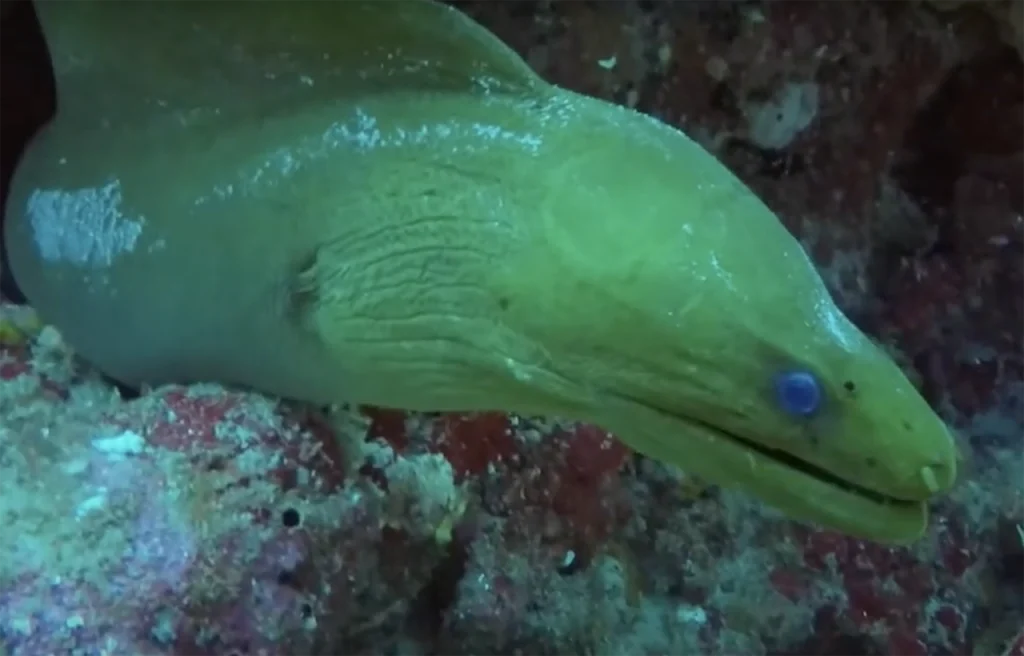
Maximizing Your Diving Experience at Captain Mike’s
Best Times to Dive
- Optimal Seasons: The best time to dive is between January and April, when visibility is typically excellent, and you can spot Lemon Sharks. Additionally, August to September is ideal for witnessing Goliath Grouper spawning.
- Visibility: Aim for days with clear water conditions, often referred to as “Jupiter Blue,” which can range from 25 to 60 feet in visibility.
Equipment Considerations
- Dive Gear: Ensure you have appropriate exposure protection and a dive computer. Consider using nitrox to extend your bottom time due to the site’s depth (typically 75-90 feet).
- Flashlight: Bringing a flashlight can enhance your exploration of crevices and tunnels, allowing you to spot hidden marine life.
Entry and Descent
- Be Alert: Upon entering the water, keep an eye out for reef sharks that often greet divers shortly after they descend. They may approach quickly but can also disappear just as fast.
- Controlled Descent: Descend carefully to avoid disturbing marine life and to maximize your chances of spotting creatures like turtles and eels.
During the Dive
- Drift Diving: Be prepared for drift diving conditions. Move slowly and deliberately to avoid missing any unique marine life. This technique allows you to cover more ground while observing the underwater landscape.
- Explore Mini-Environments: Look for the series of “aquariums” formed by the ledges, which host a variety of tropical fish and other marine species.
Key Species to Look For
- Sharks: Expect encounters with various shark species, including reef sharks and Lemon Sharks during peak seasons.
- Turtles: Keep an eye out for Loggerhead, Hawksbill, and Green turtles, often found resting or feeding in the area.
- Other Marine Life: Look for Goliath Groupers, Southern Stingrays, and large schools of fish like Atlantic Spadefish and Barracuda.
Photography Tips
- Camera Setup: Use wide-angle lenses for capturing the stunning underwater landscapes. Position strobes high and wide to illuminate subjects effectively.
- Unique Shots: Take advantage of the diverse marine life and vibrant colors present at the site for memorable underwater photography.
Capturing Memories at Captain Mike’s Dive Site: Photography Tips
Camera Preparation
- Choose the Right Equipment: Use a camera suited for underwater photography, such as a compact or DSLR with a housing. Consider renting cameras like the Canon G7X MkII or Olympus TG5 if you don’t have your own.
- Check Your Gear: Ensure your camera housing is watertight and that all components, such as strobes and batteries, are functioning properly before diving (6).
Photography Techniques
Get Close
- Proximity Matters: The number one rule in underwater photography is to get as close to your subject as possible. This helps your strobes illuminate the subject effectively and reduces the amount of water between you and the subject, which can distort colors.
Use Natural Light
- Shallow Water Shooting: Whenever possible, shoot in shallower waters where natural light can penetrate better. This can result in vibrant colors without needing additional lighting equipment (5).
Experiment with Angles
- Shoot Upward: Capturing images from below looking up can create dramatic effects and highlight the beauty of the surface light filtering through the water.
Slow Shutter Speed
- Capture Movement: If you’re photographing moving subjects, consider using a slower shutter speed to capture ambient light and create a sense of motion.
Be Patient
- Wait for the Moment: Sometimes, the best shots come from waiting for marine life to present itself naturally. Patience can lead to stunning opportunities, such as a turtle surfacing or fish interacting.
Post-Dive Considerations
- Editing Your Photos: After your dive, use editing software like Adobe Lightroom to enhance your images. Adjusting brightness, contrast, and color balance can significantly improve your final photos.
Courses and Workshops
- Take a Course: Consider enrolling in a Digital Underwater Photography course offered at Captain Mike’s Diving to learn professional tips and techniques that work with any camera.
Frequently Asked Questions
When is the best time to dive Captain Mike’s Dive Site?
The best time to dive at Captain Mike’s Dive Site in Jupiter, Florida, generally falls between January and April. During this period, divers can expect optimal visibility and a rich variety of marine life, including seasonal sightings of Lemon Sharks.
Key Highlights:
Winter Months (January – April): This is considered the peak diving season due to excellent visibility conditions and the presence of diverse marine species.
Lemon Shark Season: Particularly in January and February, divers are likely to encounter Lemon Sharks as they aggregate in the area.
Goliath Grouper Spawning: Late summer (August to September) is notable for Goliath Grouper sightings, especially during their spawning season.
Additional Considerations:
Weather Conditions: Be mindful that tropical storms can occur from December to April, which may affect dive plans. It is advisable to check weather forecasts and dive conditions before planning your trip.
What is the visibility like while diving Captain Mike’s Dive Site?
The visibility at Captain Mike’s Dive Site in Jupiter, Florida, is generally regarded as excellent. Divers can expect crystal clear waters, often referred to as “Jupiter Blue,” with visibility typically ranging from 25 to 60 feet or more, depending on the conditions.
Key Points About Visibility:
Optimal Conditions: The best visibility is usually experienced during the winter months (January to April), making this period ideal for diving.
Factors Affecting Visibility: While the water is predominantly clear, factors such as currents and sandy bottoms can occasionally stir up sediment, which may temporarily reduce visibility. However, divers often report that the overall clarity remains impressive compared to many other dive sites.
Marine Life Encounters: The excellent visibility enhances the experience of observing diverse marine life, including turtles, sharks, and vibrant schools of fish.
How deep are the dives at Captain Mike’s Dive Site?
Dives at Captain Mike’s Dive Site typically range from 75 to 90 feet deep. The dive site features a high ledge that averages between 15 to 20 feet above the sand, allowing divers to start their exploration at approximately 75 feet.
As divers drift along the ledge, they may encounter depths of up to 90 feet, particularly as they explore the surrounding areas and features of the site.
Is Captain Mike’s Dive Site suitable for beginners?
Captain Mike’s Dive Site is generally considered not suitable for beginners due to its depth and diving conditions.
Depth and Experience Requirements
Depth Range: The dives at Captain Mike’s typically range from 75 to 90 feet. This depth is often recommended for experienced divers as it requires knowledge of deeper diving techniques and safety protocols.
Advanced Open Water Certification: The site is best suited for divers with an Advanced Open Water certification or higher, as it involves drift diving in potentially strong currents.
Conditions
Current and Visibility: While visibility is often excellent, the currents can be strong, which may pose challenges for less experienced divers. The dive site features ledges and underwater topography that require familiarity with navigating such environments.
Recommendations for Beginners
Training Courses: Beginners interested in diving at Captain Mike’s should consider taking introductory courses or completing dives at shallower, more beginner-friendly sites before attempting dives at this location.
Guided Dives: If a beginner wishes to experience this site, it is advisable to dive with a certified instructor or guide who can provide support and ensure safety throughout the dive.
Is Captain Mike’s suitable for advanced divers?
Yes, Captain Mike’s Dive Site is highly suitable for advanced divers.
Depth and Conditions
Depth Range: The dives at Captain Mike’s typically range from 75 to 90 feet, making it appropriate for advanced divers who are comfortable with deeper diving conditions. The site features a high ledge that allows for exploration at various depths, which is a key aspect of advanced diving experiences.
Drift Diving
Drift Diving Opportunities: The site is known for its drift diving conditions, which require skill in managing currents. Advanced divers can enjoy the thrill of gliding along the ledges while observing diverse marine life, including sharks and turtles.
Marine Life Encounters
Rich Biodiversity: Advanced divers can expect encounters with a variety of marine species, including Goliath Groupers, reef sharks, and seasonal Lemon Sharks, particularly during the winter months. The vibrant ecosystems and unique underwater topography provide ample opportunities for exploration and photography.
Specialized Courses
Advanced Training Options: Jupiter Dive Center’s offers various courses tailored for advanced divers, such as the Advanced Open Water Diver course. This course focuses on enhancing skills in navigation, deep diving, and specialty areas like wreck diving or night diving.
Overall Experience
Well-Organized Operations: The dive center is known for its professional staff and well-organized dive operations, ensuring that advanced divers have a safe and enjoyable experience while exploring the underwater beauty of Jupiter, Florida.
Jupiter Dive Sites
- Area 51
- Area 29
- Tunnels
- Loggerhead Reef
- Bluffs Reef
- Bonnies
- Captain Kurls
- Spadefish Point
- Coral Cove Park
- Captain Mike’s
- Julies
- Emerald Charters Shark Dive
- Jupiter Wreck Trek
- Donut
- Scarface Reef Andrew “Red” Harris No Shoes Reef
- Jupiter Inlet
- Step Reef
- Sawfish Bay
- Marine Restoration Reef
- North County Reef
- Lighthouse
- Finz Den
- High Ledge
- Leigh’s Ledge
- Monkey’s Ledge
- Gary’s

